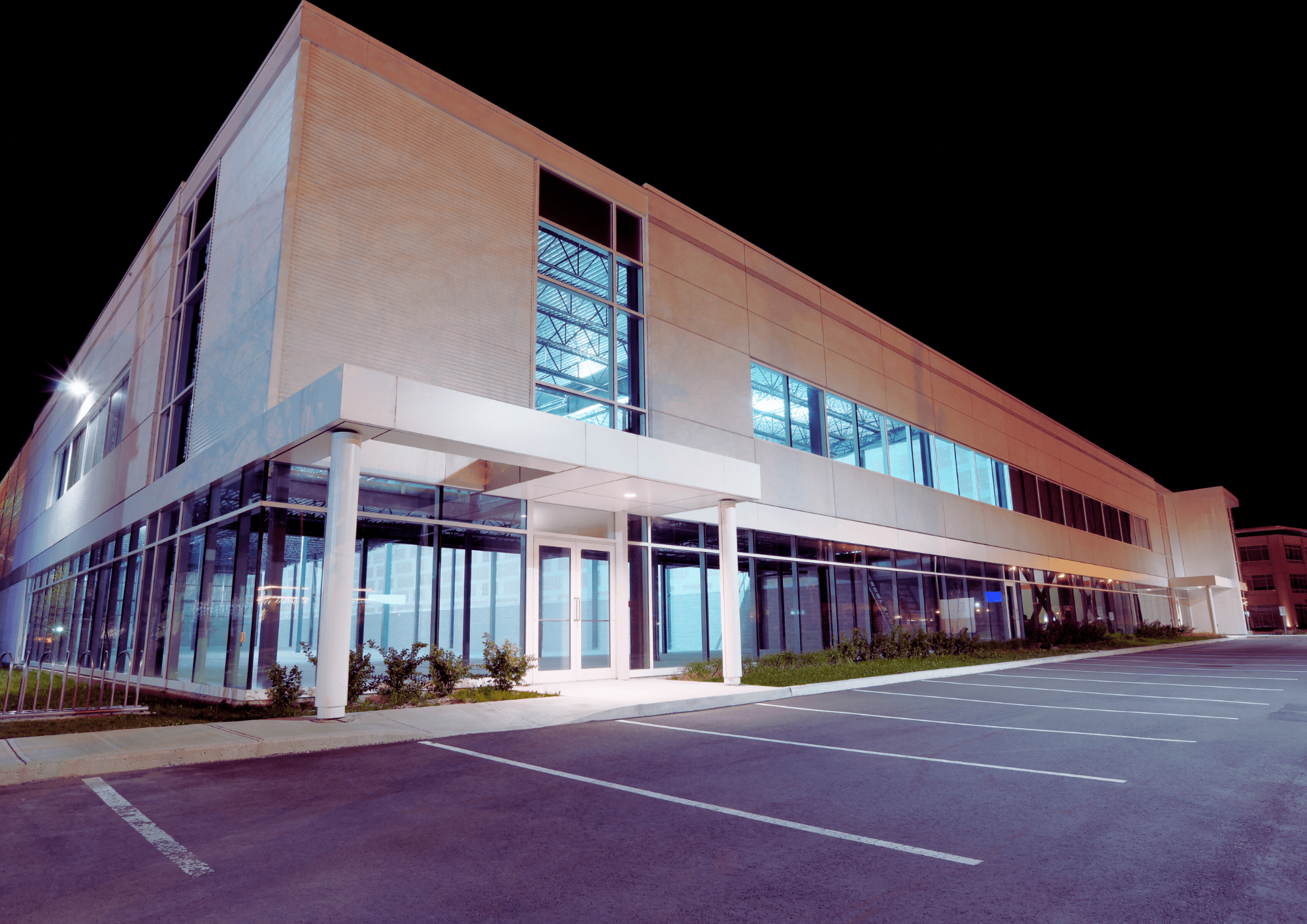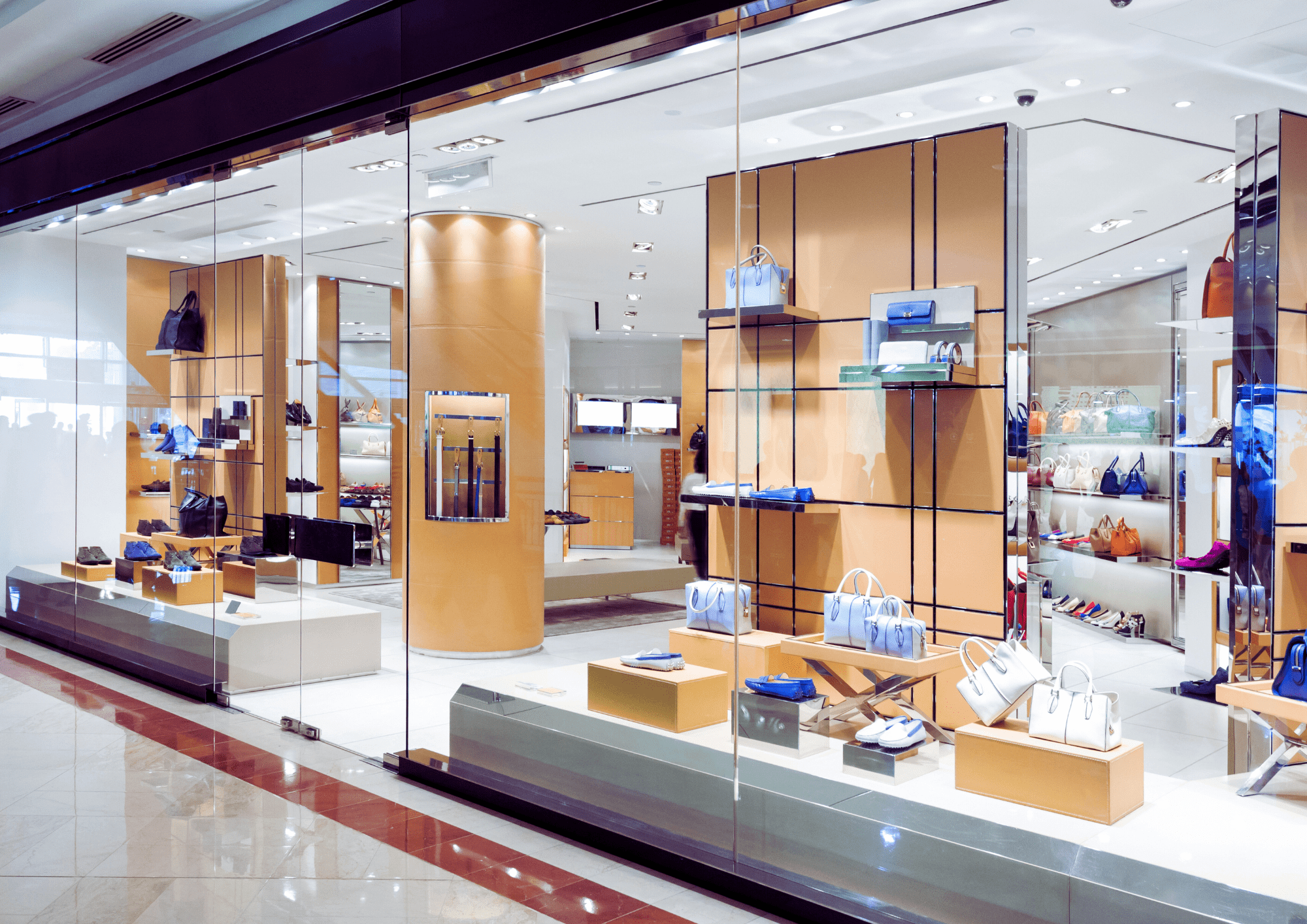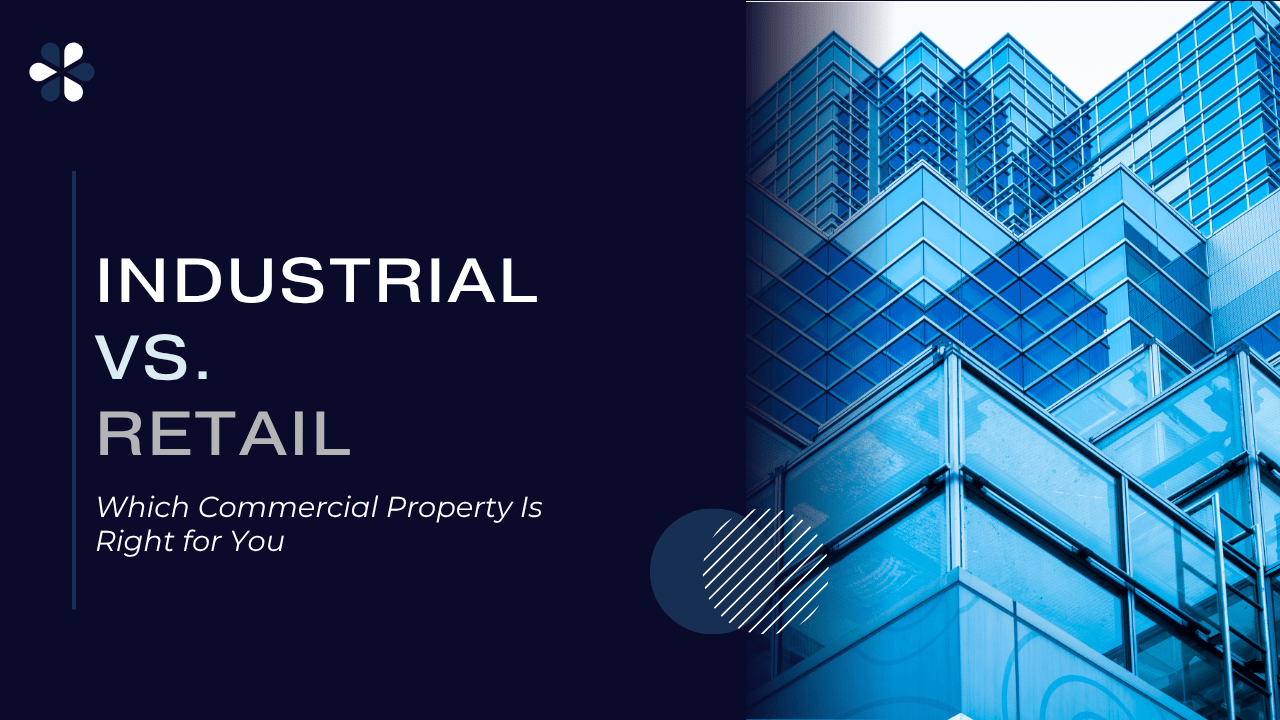Choosing the right property type is an essential part of successful commercial investing in California, and two of the most prominent asset classes competing for investor attention are industrial and retail properties.
Which makes the most sense right now?
We’re using our expertise as California commercial real estate property managers to highlight the key differences between industrial and retail real estate, analyze their respective advantages and risks, and help local and out-of-state investors determine which property type best aligns with their investment goals, risk tolerance, and market outlook.
Team Industrial: Why These Properties are Good Investments in California

Industrial properties have emerged as one of the most resilient and profitable asset classes in markets across California. Once seen as a niche segment, industrial real estate is now a major player when it comes to attracting investor attention. This interest is driven by shifts in global commerce, supply chain optimization, and evolving consumer behaviors.
Experienced and new commercial real estate investors in California can understand the potential for diversifying a portfolio and achieving stable, long-term returns.
Strong and Stable Demand
It’s all about e-commerce, and the growth in online shopping and shipping has drastically changed the landscape of warehousing and logistics. As online shopping continues to grow, companies require more distribution centers and last-mile delivery hubs. Even brick-and-mortar retailers are investing in logistics infrastructure to stay competitive. This trend has created sustained demand for industrial space in both urban and suburban markets, pushing vacancy rates to historic lows in many regions.
Additionally, the rise of on-shoring and near-shoring strategies in manufacturing is driving demand for domestic production facilities. As companies look to reduce reliance on overseas supply chains, industrial properties in strategic locations are becoming critical assets.
Lower Maintenance and Operational Costs
Compared to office buildings or retail centers, industrial properties generally require less upkeep. These buildings are often simpler in design. We usually find them to be large, open spaces with basic utility needs and minimal aesthetic considerations. Tenants typically manage much of the interior customization and maintenance themselves, reducing the burden on landlords and increasing net operating income.
Industrial leases are often structured as triple-net (NNN) agreements, where tenants cover property taxes, insurance, and maintenance. This shifts financial responsibility away from the owner, creating more predictable cash flows.
Long-Term Leases and Reliable Tenants
Industrial tenants, such as logistics companies, manufacturers, and e-commerce providers, often commit to long-term leases due to the substantial investment required to fit out the space. These extended lease terms, which are commonly 5 to 15 years, mean less frequent turnover and more stable rental income.
Many industrial tenants also tend to be creditworthy businesses with strong financials, making them reliable sources of income. Once a tenant has built out a facility to meet their operational needs, they are less likely to relocate unless absolutely necessary, increasing tenant retention rates.
Portfolio Diversification and Risk Mitigation
For investors looking to diversify their commercial real estate holdings, industrial properties offer an excellent counterbalance to more volatile sectors like office and retail. The industrial sector tends to be more insulated from economic downturns, especially with the continued need for resilient supply chains.
Industrial properties are also scalable. Whether it’s a small flex space or a massive distribution center, allowing investors can enter the market at various price points and grow their holdings over time.
The industrial real estate market is a high-performing category with strong fundamentals and growth potential. With stable demand, attractive lease structures, and relative ease of management, industrial properties offer investors a smart way to build wealth and future-proof a portfolio.
Wondering if this is your best opportunity in commercial real estate? Contact us at Bell Properties Commercial Real Estate and we’ll evaluate your investment goals and talk about options.
Retail Spaces Have Their Own Strength as Commercial Investments

There’s a bit of skepticism around whether retail real estate has a future, given the digital world we have become. Retail properties, however, remain a profitable and strategic asset class for commercial real estate investors in California. We have seen retail spaces evolving, and smart investors are finding ways to leverage their adaptability, resilience, and long-term potential.
Steady Cash Flow with Triple Net Leases
One of the biggest draws for investors in retail real estate is the prevalence of triple net (NNN) leases. Under these leases, which are also common in industrial spaces, tenants are responsible for property taxes, insurance, and maintenance, significantly reducing the landlord’s operational burdens and expenses. For investors, this means a more predictable income stream and less day-to-day involvement, making retail properties especially appealing for passive income strategies.
Tangible Demand in Prime Locations
Well-located retail properties in high-traffic areas, such as near residential neighborhoods, transit hubs, or entertainment zones, continue to attract tenants and customers. This is especially true when parking is available and the building is easy to access. Even in a digital age, consumers still seek physical experiences: dining out, personal care services, fitness studios, and more. This shift toward service-based and experiential tenants has revitalized many retail centers and created new opportunities for income generation and tenant diversification.
Portfolio Diversification and Inflation Hedge
Retail properties offer an excellent way to diversify a commercial real estate portfolio. Compared to office or industrial properties, retail investments can provide different risk and return profiles, helping balance an investor’s overall exposure. Furthermore, many retail leases include rent escalation clauses, which can help hedge against inflation and preserve purchasing power over time.
Adaptability to Market Trends
Modern retail properties are not static assets. They’re actually evolving spaces that can be repositioned or redeveloped to meet changing market demands. For example, traditional big-box retail locations can be repurposed for medical offices, grocery-anchored centers, or mixed-use developments. This adaptability makes retail an attractive asset class for investors with a long-term, value-add mindset.
Community-Centered Value
Retail real estate often represents community interaction. These properties are more than just storefronts; they are social and economic hubs for neighborhoods, shoppers, and fellow businesses nearby. Investors who understand the local market can create strong tenant relationships and deliver properties that truly serve their communities. This results in higher tenant retention, customer loyalty, and long-term value.
Attractive Cap Rates Compared to Other Asset Classes
While industrial cap rates have compressed in recent years due to heightened investor interest, retail properties often offer more favorable yields. For investors seeking higher returns, particularly in secondary or tertiary markets, well-performing retail centers can present compelling opportunities.
Retail real estate is diverse. It could meet the needs of any kind of business; from a yoga studio to an art gallery to a hardware store. For investors willing to understand location dynamics, tenant mix, and evolving consumer trends, retail properties offer a combination of cash flow stability, flexibility, and growth potential that is hard to ignore. As retail continues to reinvent itself, the time to reconsider it as a core component of a commercial real estate portfolio is now.
Let’s take a look at retail spaces that might fit your investment portfolio perfectly. Contact us at Bell Properties Commercial Real Estate.
What to Buy: Key Investment Considerations for California Commercial Investors
 There’s no blueprint that fits every commercial investor. Choosing between industrial and retail space will depend on a number of specific factors. These are the things we always recommend that buyers consider.
There’s no blueprint that fits every commercial investor. Choosing between industrial and retail space will depend on a number of specific factors. These are the things we always recommend that buyers consider.
Tenant Risk & Lease Structures
Industrial spaces are often leased to large, creditworthy tenants and with a Triple Net Lease, maintenance and operating costs are shifted to the tenant. Lease terms are longer. For retail spaces, there’s going to be a variety of tenants. It could be a national brand or a local boutique. There might be a shorter lease period, and rent prices can often depend more on market cycles.
Location, Location, Location
The where is almost as important as the what. Industrial investments need to be close to highways, ports, and maybe rail lines, too. The logistics will drive location more than desirability. With a retail investment, investors do not want a remote location. The property has to be in high-visibility, high-traffic areas to attract foot traffic.
Cap Rates and Return Profiles
What about the potential for profitability?
Industrial
Lower cap rates in top-tier markets due to high demand.
More stable income, but less room for dramatic upside unless there's a value-add component.
Institutional investors are heavily active in this space.
Retail
Higher cap rates are common, especially for multi-tenant centers.
Potential for higher cash-on-cash returns.
Riskier markets and tenant churn can drag down performance.
What do you think? Retail can offer higher yields but comes with more volatility. Industrial offers lower-risk, lower-yield returns. Contact us at Bell Properties Commercial Real Estate to discuss.
Future Outlook and Resilience

Where are each of these markets headed?
In the industrial market, we see continued tailwinds from e-commerce, automation, and onshoring. AI and robotics could change space requirements, but won’t eliminate the need for physical logistics hubs. And, the high barriers to entry, especially in California, might leave this market in need of serious investors.
When it comes to retail, we still believe brick-and-mortar is not dead. It is evolving. Experiential and essential retail like medical, grocery, fitness, will remain in demand. The risks we imagine as commercial property management experts include recessionary impacts on consumer spending and ongoing retail bankruptcies.
Where does this leave you and your commercial investment plans? Contact us at Bell Properties Commercial Real Estate, and we’ll discuss it.



